1,071 news posts

Environment
28 Oct 2022
Real-time space observations can now keep watch over ‘super emitter’ power plants
By Mischa Dijkstra, Frontiers science writer Bełchatόw power station in central Poland. Image credit: Pawel Brzozowski / Shutterstock.com Under the Paris Agreement, countries will need to track greenhouse gas emissions at the level of individual ‘super emitters’, such as power plants, in close-to-real time. Researchers show for the first time that this is already possible with data from existing satellites and instruments like NASA’s OCO-2 and OCO-3 (attached to the International Space Station), both designed to measure emissions at much larger spatial scales. This proof-of-principle indicates that the EU’s ‘CO2M’ pair of satellites, planned for 2025 or 2026, with a joint coverage a hundred times greater than OCO-2 and OCO-3, should be able to deliver on future needs. Countries signed up to the 2015 Paris Agreement have committed themselves to keep the rise in average global temperature ‘well below’ 2 °C. Every five years, they are to issue so-called ‘nationally determined contributions’ (NDCs), describing their actions to reduce greenhouse gas (GHG) emissions and adapt to climate change impacts. Countries will thus need to track their carbon emissions, not only at a national level, but also at the scale of individual ‘super emitters’ such as power plants, megacities, refineries, and giant […]

Featured news
27 Oct 2022
How do we stop ‘robot evolution’ from spiraling out of control? Two essential articles on the future of robotics and AI
By Colm Gorey, Frontiers Science Communications Manager Image: Shutterstock.com Robotics and AI have quickly outgrown as tropes of science fiction and are almost ubiquitous in our daily lives, even if we don’t realize it. Now, Frontiers highlights just some of the latest top articles in this fascinating field. Whether it’s wheeled robots whizzing around city-sized warehouses, or if it’s just a smart assistant in your phone, robotics and AI has quickly become integral technologies in our lives. And while big tech companies and gadget lovers are quick to speak of its enormous benefits, those closely studying the field are calling on more caution. These technologies are working well now, but can we allow them to develop indefinitely? That’s among the questions being asked by some of the largest governmental bodies in the world – such as the EU and UN – who believe stricter rules and regulations are needed to keep technology not only within the realms of rapidly-outdated laws, but make sure they don’t eventually lead to our downfall. To that end, here are some of the latest articles published to Frontiers authored by some of the top researchers in their field as part of the research topic ‘Horizons […]

Featured news
26 Oct 2022
‘Virtual autopsy’ identifies a 17th century mummified toddler hidden from the sun
by Angharad Brewer Gillham, Frontiers science writer Image: Riderfoot/Shutterstock.com Scientists used a ‘virtual autopsy’ to examine the mummy of a child found in an aristocratic family crypt, revealing him most probably as Reichard Wilhelm (1625-1626). Despite his wealthy background, the child experienced extreme nutritional deficiency and a tragically early death from pneumonia. A team of scientists based in Germany have examined a 17th century child mummy, using cutting-edge science alongside historical records to shed new light on Renaissance childhood. The child was found in an aristocratic Austrian family crypt, where the conditions allowed for natural mummification, preserving soft tissue that contained critical information about his life and death. Curiously, this was the only unidentified body in the crypt, buried in an unmarked wooden coffin instead of the elaborate metal coffins reserved for the other members of the family buried there. The team, led by Dr Andreas Nerlich of the Academic Clinic Munich-Bogenhausen, carried out a virtual autopsy and radiocarbon testing, and examined family records and key material clues from the burial, to try to understand who the child was and what his short life looked like. “This is only one case,” said Nerlich, lead author of the paper published today […]

Frontiers news
25 Oct 2022
Frontiers institutional partnerships update – autumn 2022
The latest news on our collaborations with research institutions, libraries, consortia and funders Welcome from Ronald Buitenhuis, Head of Institutional Partnerships This year we have had the pleasure of welcoming an ever-growing number of institutional partners to our program. Frontiers is committed to supporting institutions to build the frameworks and infrastructure necessary for a global transition to open access. We now collaborate with over 650 institutions worldwide, providing seamless and cost-effective access to Frontiers’ services. We’re excited to launch this new quarterly update with details of Frontiers most recent impact metrics. Frontiers is now the world’s 3rd most cited and 6th largest publisher. We have 51 journals with a Journal Impact Factor and 73 with Citescore. Thanks as ever to our partners for their trust and support and we look forward to seeing many of you in person at the upcoming Charleston Conference. Find us at the Charleston Conference Frontiers Institutional Partnerships US team will be at the Charleston conference in South Carolina, USA, this November and we’d love to see you there. As a diamond sponsor of the event, we’ll be leading and participating in a range of sessions outlined below. You’ll also be able to find us at booth […]

Frontiers news
25 Oct 2022
Istituto Italiano di Tecnologia forms open access publishing agreement with Frontiers
Istituto Italiano di Tecnologia (IIT) has formed an institutional membership agreement for open access publishing with Frontiers. This institutional agreement means that eligible IIT authors will benefit from a 10% membership discount when publishing in Frontiers journals. This may be combined with any other applicable discounts, waivers and similar support schemes personally obtained by the authors. IIT supports its researchers in making their research more widely available. The new agreement with Frontiers will further encourage IIT researchers to publish open access, reducing costs and streamlining central invoicing process. Information for IIT researchers If you are an eligible IIT researcher, please select “Italian Institute of Technology (IIT)” in the payment information section (“Frontiers institutional members”) when submitting your article. Frontiers will verify your eligibility with the IIT Research Organization Directorate and, if confirmed, apply the discount on the article processing charges (APCs). Invoices will be addressed to IIT and sent directly to IIT corresponding author to arrange the payment. For more information on this agreement, please contact open_access@iit.it. For more information on Frontiers’ institutional agreements please visit our institutional memberships page or contact institutions@frontiersin.org to discuss the possibilities for your own organization.
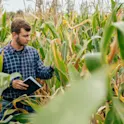
Climate action
24 Oct 2022
CO2 ventilation breakthrough could turn city rooftops into bumper vegetable gardens
by Angharad Brewer Gillham, Frontiers science writer Image: Shutterstock.com Scientists find that expelled air from ventilation systems can make corn and spinach grow taller and larger, recycling CO2-rich indoor air to fertilize edible plants. As the world’s cities grow, the hunt is on for ways to make them greener, more sustainable, and more livable. Rooftop farms and gardens that take advantage of underutilized roof space are a popular option, providing new food resources while simultaneously cooling the surrounding area, increasing building insulation, and improving air quality. But the conditions on rooftops — greater solar radiation, more wind exposure, lesser soil moisture — often mean that plants are smaller and less healthy. A team led by Dr Sarabeth Buckley, now at the University of Cambridge, theorized that repurposing the CO2 from building exhaust as a kind of fertilizer might help counter some of these challenges. To explore this, they grew corn and spinach on the roof of a campus building at Boston University. “We wanted to test whether there is an untapped resource inside buildings that could be used to make plants grow larger in rooftop farms,” said Buckley, whose team named their experimental garden BIG GRO and published their work […]

Frontiers news
21 Oct 2022
Frontiers at the Charleston Conference
Frontiers will be at the Charleston conference in South Carolina, USA, this November and we’d love to see you there. As a diamond sponsor of the event, we’ll be leading and participating in a range of sessions outlined below. You’ll also be able to find us at booth 132 throughout the conference. You can email us at institutions@frontiersin.org for more information or to arrange a meeting. Where to find us at Charleston: Tuesday, 1 November (vendor day), 11:30 AM EST in Salon 1 of the Gaillard Center. The 20-minute vendor information session led by Thomas Romano, global sales manager institutional partnerships This session will introduce Frontiers, our mission-driven, researcher-centric approach and core values. Wednesday 2 November at 1:15 pm EST at Gaillard Center Grand Ballroom 3 Hyde Park Debate ‘Resolved: Transformative Agreements Represent the Best Possible Mechanism for a Full Transition to Open Access’. Frontiers’ head of public affairs, Stephan Kuster, joins the conversation. Wednesday, 2 November, 4:00 – 4:40 PM EST at Francis Marion Hotel Colonial Ballroom Panel discussion ‘The Nelson Memo: A tipping point for open access science in the US?’: moderated by Julia Kostova, director of publishing development. See the full conference program here.
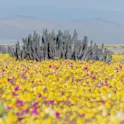
Environment
21 Oct 2022
Secret behind spectacular blooms in world’s driest desert is invisible to human eyes
By Mischa Dijkstra, Frontiers science writer The 2021 ‘desierto florido’ near Caldera, Chile. The purple flowers are the pussypaw Cistanthe longiscapa (family Montiaceae), the object of this study. Image credit: Oven Pérez-Nates A ‘desierto florido’ mass bloom happened in the northern Atacama desert in 2021, which was even visible from space. Researchers used advanced imaging techniques to measure the variation in flower color and pattern for the dominant species, the pussypaw Cistanthe longiscapa. They found that this variation is much greater when viewed by the UV-sensitive eyes of hymenopteran pollinators, and caused by differences in the mix of betalain pigments in the petals. Evolution is probably ongoing, driven by the species-specific visual preferences of pollinators, which could ultimately lead to new species. The Atacama desert, which stretches for approximately 1,600 km along the western coast of the cone of South America, is the driest place on Earth. Some weather stations there have never recorded rainfall throughout their existence. But it‘s far from barren: many species live here that occur nowhere else, adapted to its extreme conditions. And approximately every five to 10 years, from September to mid-November, the Atacama hosts one of the most spectacular sights of the natural world: […]
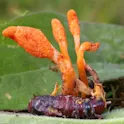
Environment
19 Oct 2022
Mushroom that grows on insects could help develop new anti-viral medications and cancer drugs
By Angharad Brewer Gillham, Frontiers science writer Image: bob.leccinum.Robert Kozak/Shutterstock.com Scientists studying the medicinal potential of a rare insect-eating mushroom have found a way to grow the elusive fungi in the lab, opening the way for the development of new anti-viral and cancer medications. The Cordyceps mushroom is best known for its gruesome eating habits: famously, its spores infect insects and kill them, growing into fully-fledged fruiting bodies that sprout from the insects’ flesh. But Cordyceps also has significant medicinal potential, containing a bioactive compound cordycepin which could potentially be developed into powerful new antiviral medications and cancer drugs. The mushrooms are rare in the wild, and until now, growing healthy Cordyceps in the lab has been a challenge which impedes scientific research – but Professor Mi Kyeong Lee of Chungbuk National University and her team including Dr Ayman Turk, publishing today in Frontiers in Microbiology, have found a way to grow these elusive fungi in a controlled setting without losing their potency. “Cordycepin is one of the cytotoxic nucleoside analogs with complementary therapeutic activities in anti-proliferation and anti-metastasis in cancer cells,” said Dr Lee, senior author of the study. “In addition, recent research findings strongly urge preclinical and clinical […]
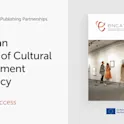
Frontiers news
18 Oct 2022
Frontiers to publish European Journal of Cultural Management and Policy
The European Network on Cultural Management and Policy (ENCATC) has announced a new partnership with open access publisher Frontiers. Frontiers will now publish ENCATC’s open access journal, the European Journal of Cultural Management and Policy, on its award-winning open access publishing platform. The partnership was finalized in May 2022. The journal’s archive will be transferred to Frontiers publishing platform and the first new articles are expected to be published by the end of the year. Photo credit: Frontiers Editor-in-chief Professor Fabio Donato said: “The European Journal of Cultural Management and Policy is fully committed to open access, a policy which will be central to scientific development in the coming years in Europe and beyond. Through this agreement, we will continue pioneering the promotion of ground-breaking research that helps advance the cultural and creative sectors.” The European Journal of Cultural Management and Policy, which aims to stimulate debate on cultural management and policy, was launched in 2011. Connecting theory and practice in the cultural sector, it is known for highlighting multidisciplinary perspectives and providing an impactful venue for experts in the field. It is currently indexed in Emerging Sources Citation Index (ESCI)-Web of Science and ERIH Plus-European Reference Index for the […]
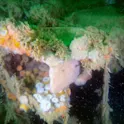
Earth science
18 Oct 2022
WWII shipwreck has leaked many pollutants into the sea, changing the ocean floor around it
By Suzanna Burgelman, Frontiers science writer Torn deck plating of the V 1302 John Mahn that was damaged by the bomb that hit amidships. Image: Flanders Marine Institute/VLIZ Researchers have discovered that an 80 year old historic World War II shipwreck is still influencing the microbiology and geochemistry of the ocean floor where it rests. In Frontiers in Marine Science, they show how the wreck is leaking hazardous pollutants, such as explosives and heavy metals, into the ocean floor sediment of the North Sea, influencing the marine microbiology around it. The seabed of the North Sea is covered in thousands of ship and aircraft wrecks, warfare agents, and millions of tons of conventional munition such as shells and bombs. Wrecks contain hazardous substances (such as petroleum and explosives) that may harm the marine environment. Yet, there is a lack of information about the location of the wrecks, and the effect they might have on the environment. “The general public is often quite interested in shipwrecks because of their historical value, but the potential environmental impact of these wrecks is often overlooked,” said PhD candidate Josefien Van Landuyt, of Ghent University. For example, it is estimated that World War I and […]
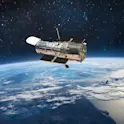
Featured news
14 Oct 2022
New walking robot design could revolutionize how we build things in space
By Suzanna Burgelman, Frontiers science writer Image: Shutterstock.com Researchers have designed a state-of-the-art walking robot that could revolutionize large construction projects in space. They tested the feasibility of the robot for the in-space assembly of a 25m Large Aperture Space Telescope. They present their findings in Frontiers in Robotics and AI. A scaled-down prototype of the robot also showed promise for large construction applications on Earth. Maintenance and servicing of large constructions are nowhere more needed than in space, where the conditions are extreme and human technology has a short lifespan. Extravehicular activities (activities done by an astronaut outside a spacecraft), robotics, and autonomous systems solutions have been useful for servicing and maintenance missions and have helped the space community conduct ground-breaking research on various space missions. Advancements in robotics and autonomous systems facilitate a multitude of in-space services. This includes, but is not limited to, manufacturing, assembly, maintenance, astronomy, earth observation, and debris removal. With the countless risks involved, only relying on human builders is not enough, and current technologies are becoming outdated. “We need to introduce sustainable, futuristic technology to support the current and growing orbital ecosystem,” explained corresponding author Manu Nair, PhD candidate at the University of […]
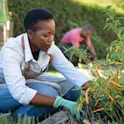
Environment
13 Oct 2022
From chili-heat pain relief to blue whale migration: 5 Frontiers articles you won’t want to miss
by Angharad Brewer Gillham, Frontiers science writer Image: Shutterstock.com At Frontiers, we bring some of the world’s best research to a global audience. But with tens of thousands of articles published each year, many often fly under the radar. Here are just five amazing papers you may have missed. Chili to the rescue: Modulating capsaicin as a treatment for chronic itching Pain and itching are both signals that help humans protect themselves, by prompting us to end contact with whatever causes us pain or make us itch. However, they are also key symptoms of many disorders, and can be frustratingly difficult to treat. Scientists from the Universidad Miguel Hernández, writing in Frontiers in Molecular Neuroscience, investigated whether transient receptor potential channels, which pick up sensory cues ranging from the taste of wasabi to changes in pH, could help treat pain and itching. Previous attempts to exploit these channels to stop pain and itching have not been successful because they cause overheating as a side effect, so the authors suggested that ‘soft’ modulation of the channels might be more patient-friendly, targeting only the channels that aren’t working correctly. While there are several existing medications which use capsaicin to target these channels, […]

Featured news
12 Oct 2022
Francesca Altieri – From Maths to Mars
By Leticia Nani Silva For this article, I had the pleasure of interviewing Dr Francesca Altieri, a planetary science researcher at the Institute for Space Astrophysics and Planetology in Rome, Italy. Altieri focuses her research on the surface composition of solid bodies within the solar system. In this interview, our discussion is focused on how culture and tradition amongst families affect our decisions to pursue a career completely outside the expectations of our parents. Furthermore, we focus on the importance of taking big leaps of faith as well as how taking these leaps allows you to discover your own hidden talents. Photo credit: Corrado Spagnoli Altieri’s main goal was to become a teacher. Her family encouraged her to go to university and study literature, philosophy, Greek, and Latin. It was only after speaking to a close family member that she saw the struggle of getting a job in that particular field which triggered a switch to STEM. “My brother was already at university at the time and encouraged me to join him. I decided, out of all the STEM subjects, I was going to study physics and astronomy,” Altieri comments on the fact that this choice in the subject did […]
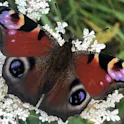
Environment
12 Oct 2022
The ultimate death stare: How moth wing patterns scare off predatory birds with amazing optical illusion
by Dr Hannah Rowland, Max Planck Institute for Chemical Ecology, and Dr John Skelhorn, Newcastle University Image: Dr Hannah Rowland Many prey species have eyespot markings that are believed to ward off predators. But how, and does a predator’s angle of approach make them less effective? Dr Hannah Rowland and Dr John Skelhorn write for Frontiers about their research, published today in Frontiers in Ecology and Evolution, into how these protective patterns on moth wings convince birds it’s not worth attacking the insects. How art mirrors life when it comes to moth wings Have you ever felt that a person in a portrait is watching you, their eyes following you about a room? This optical illusion is known as the Mona Lisa effect, after Leonardo da Vinci’s famously enigmatic painting. When artists paint their sitter’s eyes with the pupils perfectly centered, no matter where visitors stand – to the left, right, or in front of the painting – eye contact is guaranteed. Nature seems to have hit upon the same idea. But in the animal kingdom it can be a matter of life or death. Many species of fish, butterflies, moths, praying mantids, and beetles have paired circular markings on […]